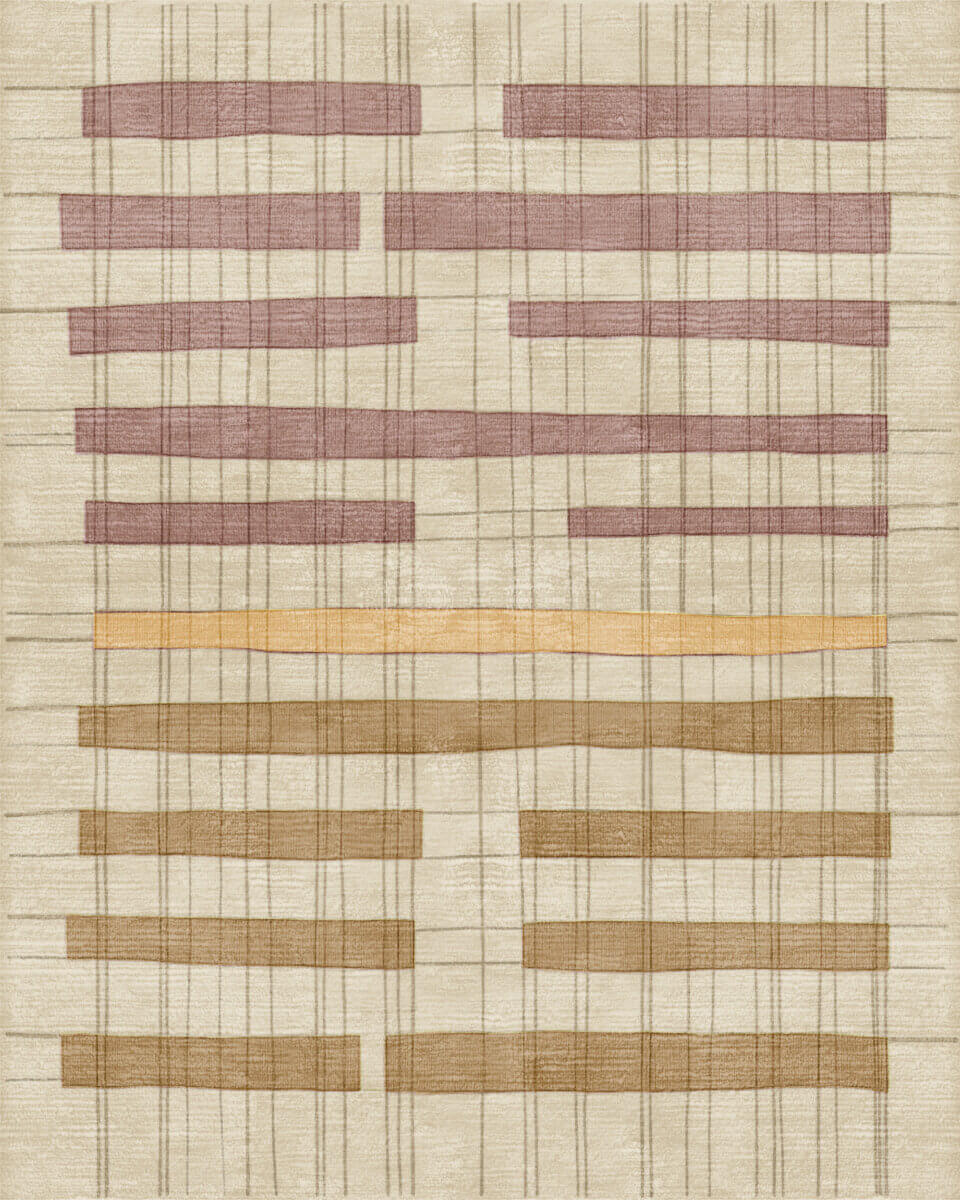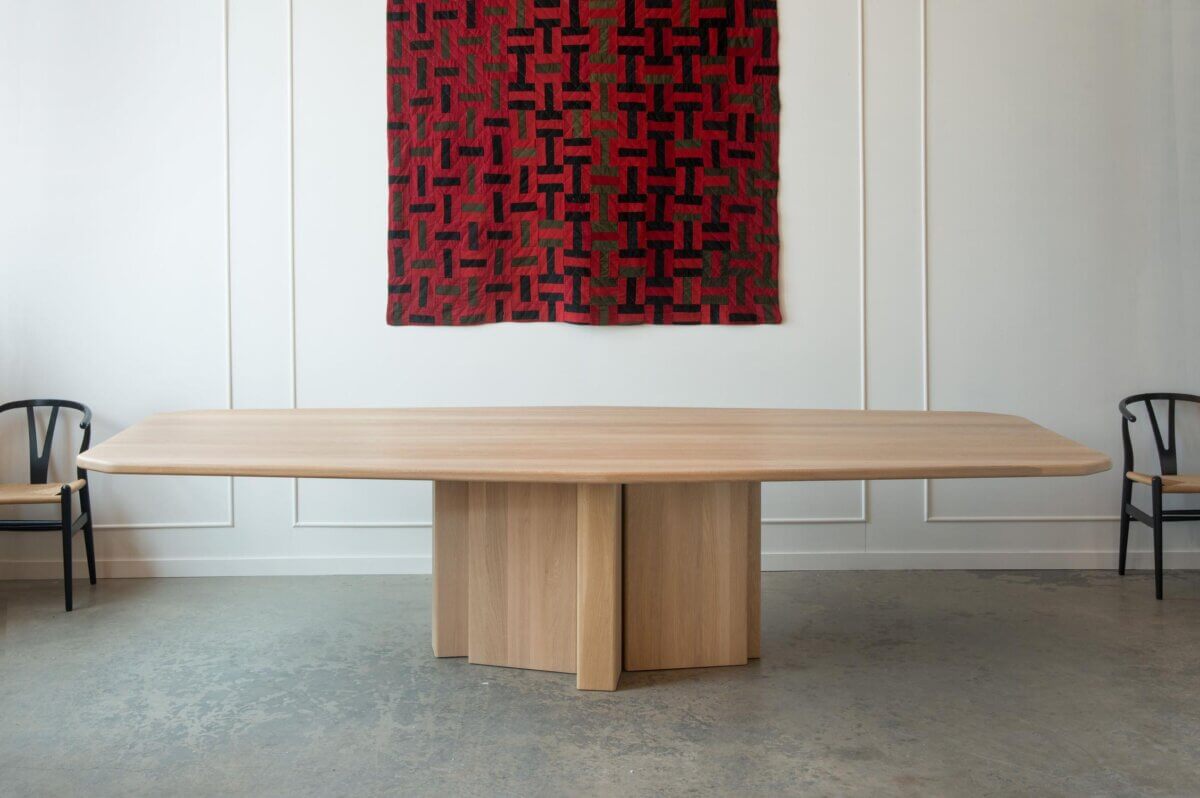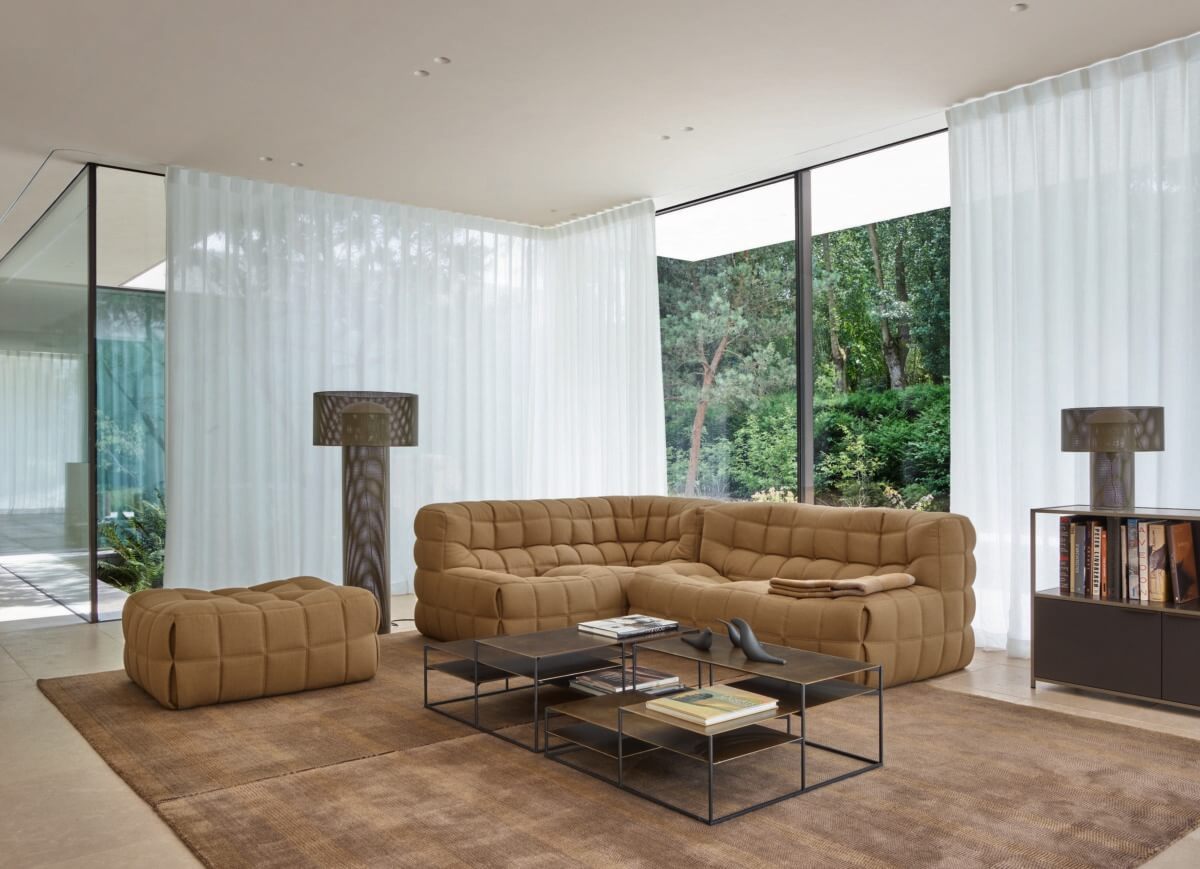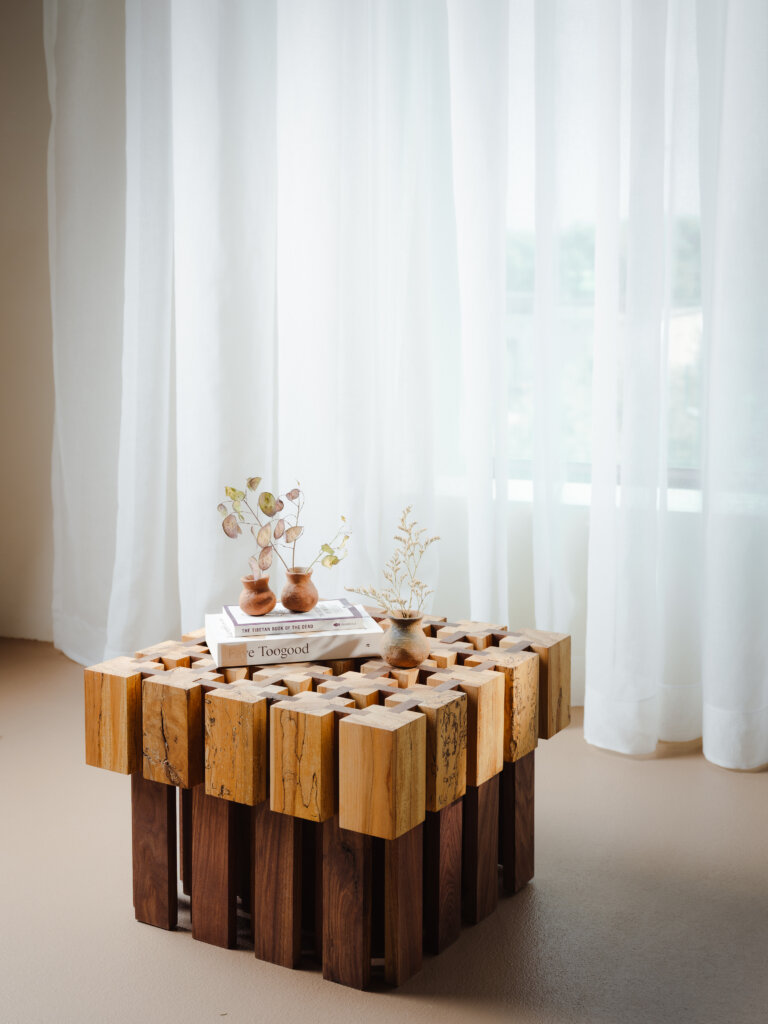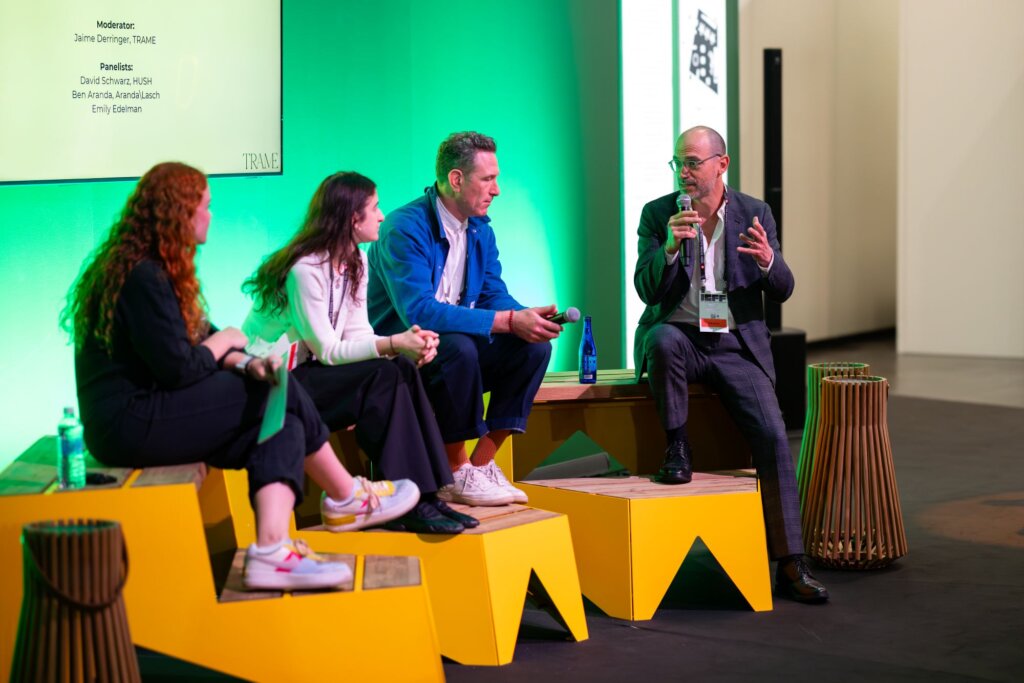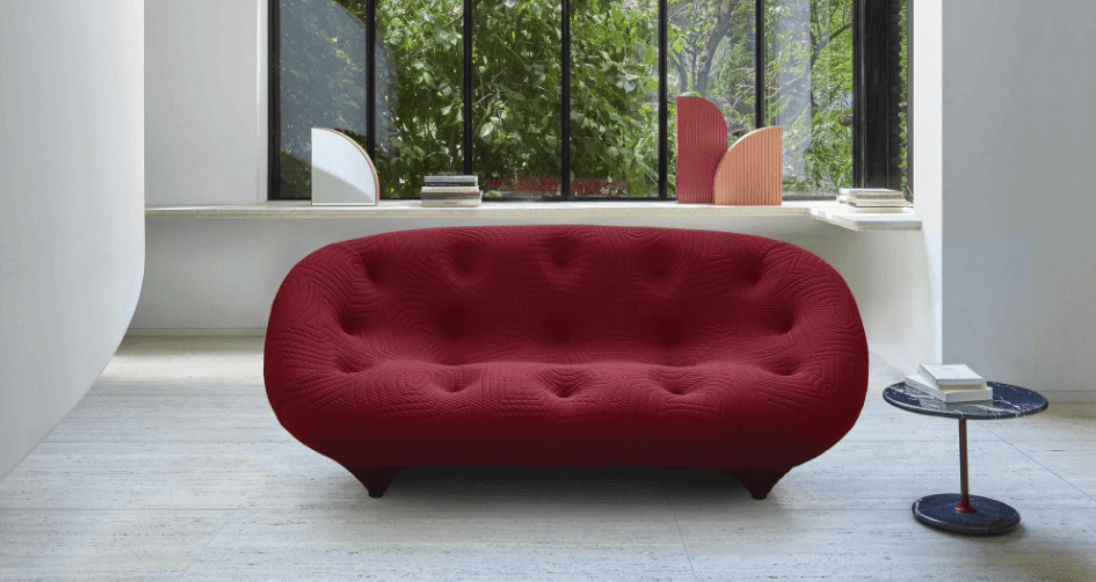
International trade policy has been a roller coaster, to say the least. Since beginning his second term in office in early 2025, President Trump has imposed new, higher tariffs on imports—often as punishment for political reasons—while the countries subject to them have responded with retaliatory tariffs. The rates have fluctuated wildly, with some as high as 50%. Meanwhile, the administration has granted exemptions on a case-by-case basis. This has led to a confusing and unpredictable landscape for brands and their customers. But despite the new challenges, designers and brands remain committed to doing business stateside according to ICFF participants we interviewed.
(Image above: Ploum High-Back Medium Sofa in Appa Rouge, image courtesy of Ligne Roset)
For some brands, the answer to a fluctuating landscape is to stay the course instead of adopting a reactive position. “While tariff policies may shift frequently, our approach to business remains steady,” says Michael Mandapati, founder of Warp & Weft, a New York-based carpet company which imports from mills in India, Nepal, Thailand, China, and Afghanistan. “These changes have not altered how we operate day-to-day.”
Instead, Mandapati remains focused on the qualities that helped build Wart & Weft’s reputation in the first place. “What remains unchanged is the foundation of our work: outstanding product quality and trusted, long-standing relationships,” he says. “Regardless of external factors, our clients know they can rely on us for consistency, transparency, and excellence.”
But designers are confronting a shifting global landscape. Simon Johns, a furniture maker based in Quebec, says that his sales overall are down after years of exponential growth. He attributes this to global economic instability. “Everyone’s just kind of worried and trying not to pull the trigger on anything too fast,” Johns says.
Today, 70% of Johns’s sales are to the U.S., a figure that hasn’t changed since the onset of tariffs. He believes this is because the policy changes are still fresh. However, he has noticed potential confusion from American customers who might be interested in purchasing Canadian goods and assume that everything will be subject to the 35% tariff currently in place. His pieces are USMCA-certified, which means they are exempt from tariffs and cost the same to import as they always have. He plans to send out a newsletter to communicate to his customers that nothing for them has changed.
What has changed for Johns is the price he pays for components that he uses in his furniture. He sources brass parts from an American company, which receives its metal from Eastern Europe. This part is now subject to two new tariffs—the metal coming into the U.S. and then the part entering Canada—which has doubled the cost to Johns. “I’d normally be paying $700 of brass for one piece of furniture, and now it’s $1,500,” he says. He’s exploring an alternate source for these parts.
Amid the tumultuous trade landscape, Johns is still focused on the U.S. market, partly because of the relationships he has made in the nearly 10 years that he has exhibited work at fairs in New York as well as the proximity to his studio since shipping heavy cabinetry is costly. “If you want to sell to Los Angeles, you want to sell to Miami, you want to sell to Colorado, you’ve got to show in New York City,” he says. “It’s the hub.”
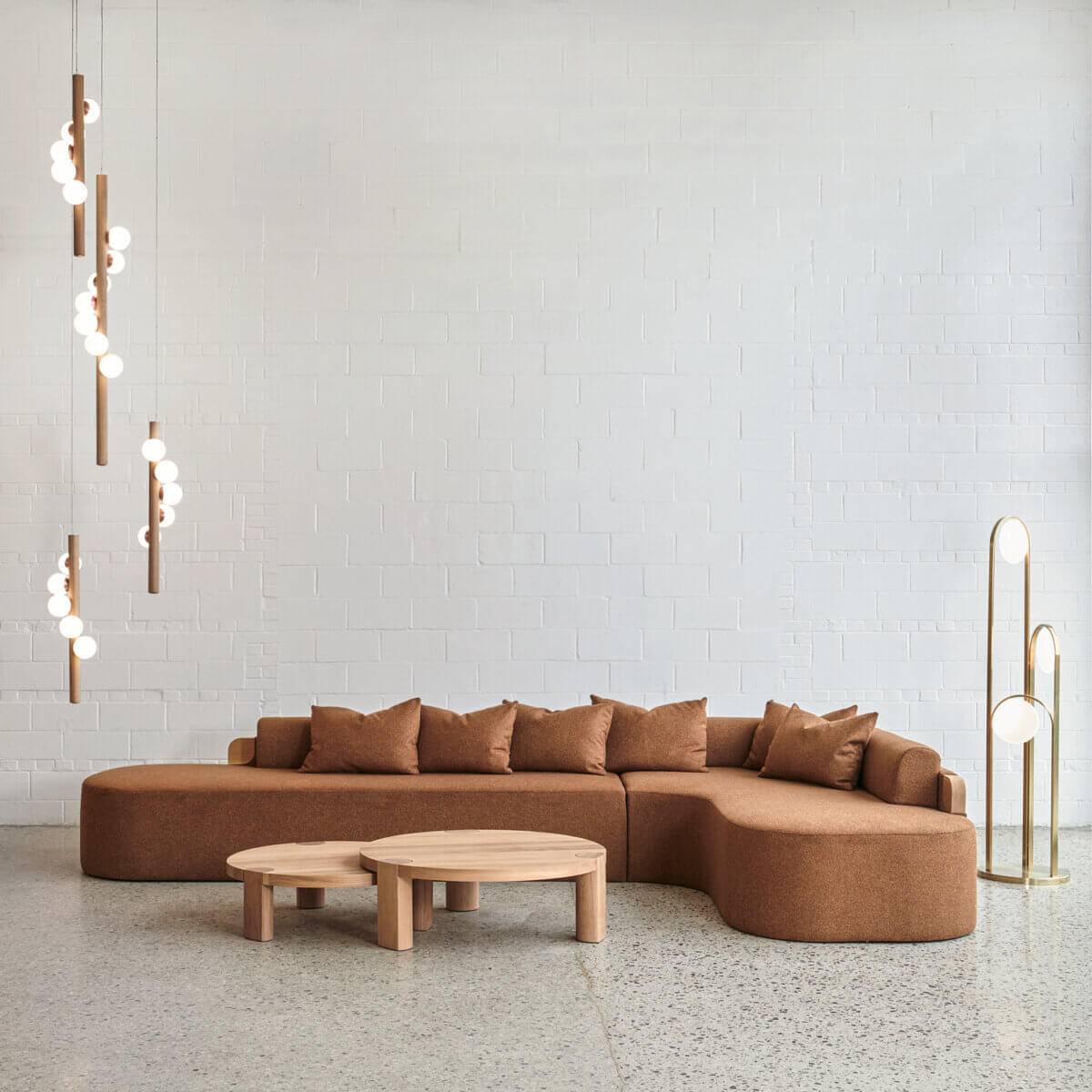
Riverside Sofa, Levee Coffee Table, Vertical Willow Pendants, Ellipse Floor Lamp, image courtesy of hollis+morris
Similarly, the Toronto-based lighting brand hollis+morris (whose products are also exempt from tariffs due to USMCA certification) is also strengthening relationships with its U.S. clients during this time. They account for 80% of the company’s sales. “Commitment to the partners who have supported you for a long time is essential,” says Mischa Couvrette, founder and creative director of hollis+morris. The brand exhibited at ICFF this spring and will return to New York in November to launch a new hospitality-focused collection at BDNY.
Both hollis+morris and Simon Johns are exploring other markets, too. It’s “a two-pronged approach,” Couvrette says. “Understand your main markets and continue to foster them, while intentionally building new markets allowing for flexibility in the future if policy shifts.” This year, Hollis+Morris exhibited at 3daysofdesign, in Copenhagen, for the first time. Johns is thinking about participating in fairs in Mexico City and Europe in addition to New York.
International brands are also investing in their real estate in the U.S. to give them an edge. Ethnicraft, a furniture company based in Belgium, recently opened an $18 million warehouse in High Point, North Carolina. Meanwhile, the French brand Ligne Roset, which does 20% of its business in North and South Americas, is refreshing both its Park Avenue flagship and outpost in Midtown to make the spaces more friendly for retail customers, trade clients, and the contract market. Simone Vingerhoets-Ziesmann, Executive Vice President, Ligne Roset Americas, notes that customers in the U.S. are drawn to the company’s classic, timeless pieces as well as its new releases—qualities that remain constant regardless of trade wars.
“Our clients’ passion for Ligne Roset—the comfort of our creations, the elegance of our aesthetic, and the stories told through our heritage—remains unwavering, undiminished even in the face of tariffs,” Vingerhoets-Ziesmann says. “On the contrary, such challenges serve as an opportunity to reaffirm our strengths, highlighting the enduring relevance of our vision, our quality, and the cultural resonance of our work.”
Through all the shifts, a sense of confidence remains. “I am highly optimistic about our continued growth both in the U.S. and globally, and I believe the appreciation for craftsmanship and sustainability in design will only strengthen in the years ahead,” Warp & Weft’s Mandapati says.
More from ICFF:
Form & Forest: Masters of Contemporary Woodwork
Rebuilding Los Angeles
